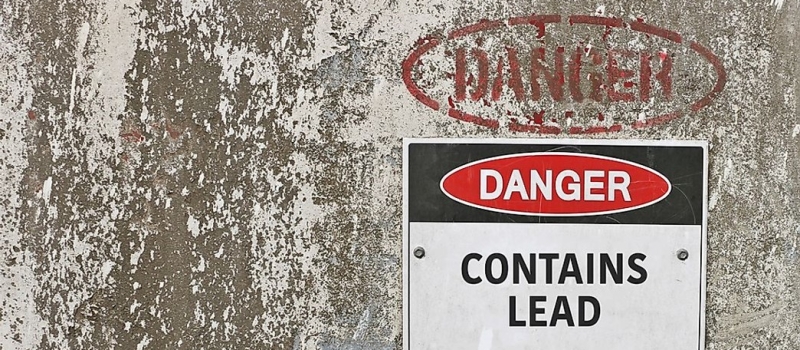Understanding Lead Safety
Monday, February 26, 2024 John Coniglio

Lead, a naturally occurring element, has been utilized by humans for thousands of years due to its versatility. However, despite its usefulness, lead poses significant health risks, particularly in workplaces where exposure is common. Understanding lead safety is important, not only for professionals but also for individuals outside of work environments where lead exposure can still occur.
Hazards
- The greatest risk of lead exposure comes from old buildings, paint, and equipment.
- Lead was once widely used in lead-based paint, pipes, and solder.
- Demolition or repairs to these buildings can release lead particles and dusts.
- These particles and dusts can be inhaled or land on food and be swallowed by accident.
- Exposure to lead can result in anemia, damage to the kidneys, the nervous system, and other internal organs.
- It can damage reproductive systems of men and women as well as their unborn children.
Routes of Exposure:
Lead exposure can occur through various routes:
1. Inhalation: Inhalation of lead dust or fumes is a common route of exposure in workplaces where lead is used or processed.
2. Ingestion: Accidental ingestion of lead-contaminated dust, soil, water, or food can occur, particularly in environments where lead is prevalent.
3. Dermal Contact: Contact with lead-containing materials or surfaces can lead to absorption through the skin, although this is typically a less significant route of exposure compared to inhalation and ingestion.
Symptoms of Exposure:
Recognizing the symptoms of lead exposure is crucial for early intervention. Symptoms may vary depending on the level and duration of exposure but can include:
1. Neurological Symptoms: Headaches, memory loss, irritability, difficulty concentrating, and mood swings.
2. Gastrointestinal Issues: Nausea, vomiting, abdominal pain, and constipation.
3. Muscle Weakness: Weakness in muscles, particularly those involved in motor skills.
4. Anemia: ead exposure can lead to decreased hemoglobin levels, resulting in fatigue, weakness, and pale skin.
Protection Measures:
Protecting oneself from lead exposure involves several strategies:
1. Engineering Controls: Employers should implement engineering controls such as ventilation systems, enclosures, and automated processes to minimize lead dust and fumes in the workplace.
2. Personal Protective Equipment (PPE): Workers should use appropriate PPE, including respirators, gloves, and protective clothing, to prevent direct contact with lead and inhalation of lead-containing particles.
3. Hygiene Practices: Encourage frequent handwashing and discourage eating, drinking, or smoking in areas where lead exposure is possible. Showering and changing clothes before leaving the workplace can also reduce the risk of lead contamination outside of work.
4. Education and Training: Employers should provide comprehensive training on lead safety, including the hazards of lead exposure, proper handling procedures, and the correct use of PPE.
5. Regular Monitoring: Implement regular monitoring of lead levels in the workplace environment and in workers' blood to detect any potential exposure hazards early.
Lead safety is important both in and out of the workplace. By understanding the hazards of lead exposure, recognizing the routes of exposure, being aware of the symptoms of exposure, and implementing effective protection measures, individuals can minimize the risks associated with lead and safeguard their health and well-being. Whether you're a worker in an industrial setting or simply concerned about lead exposure in your daily life, taking proactive steps to mitigate risk is essential for a healthier future.




